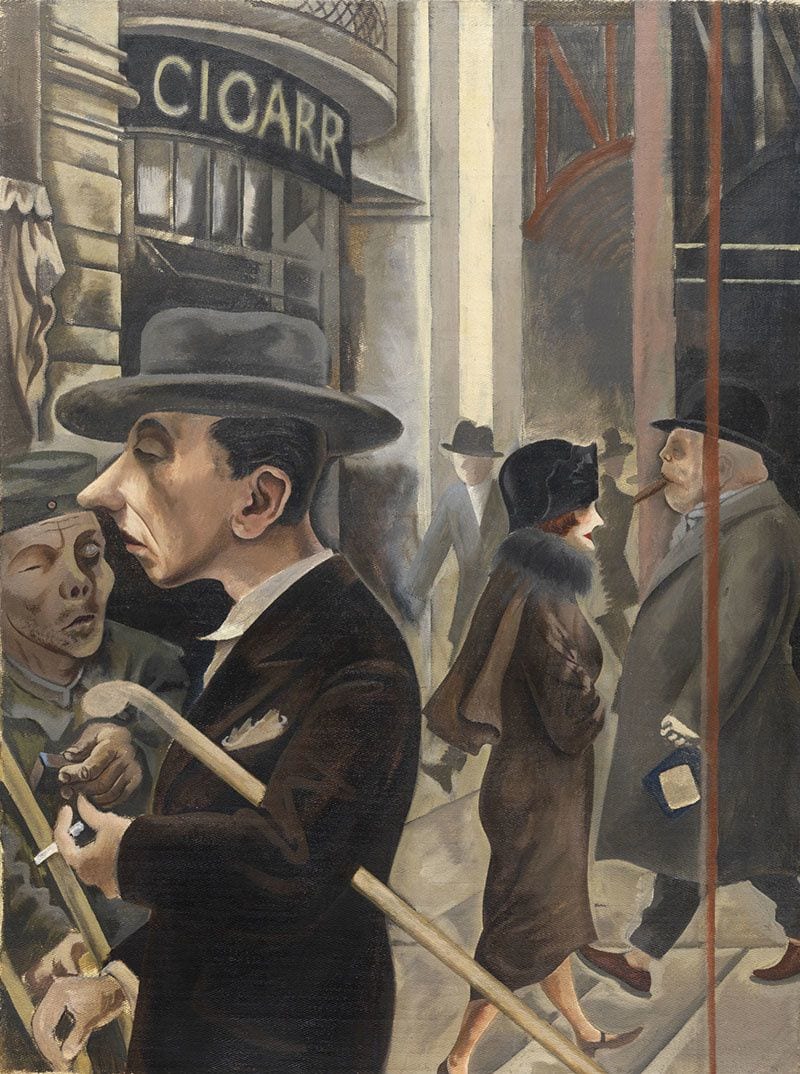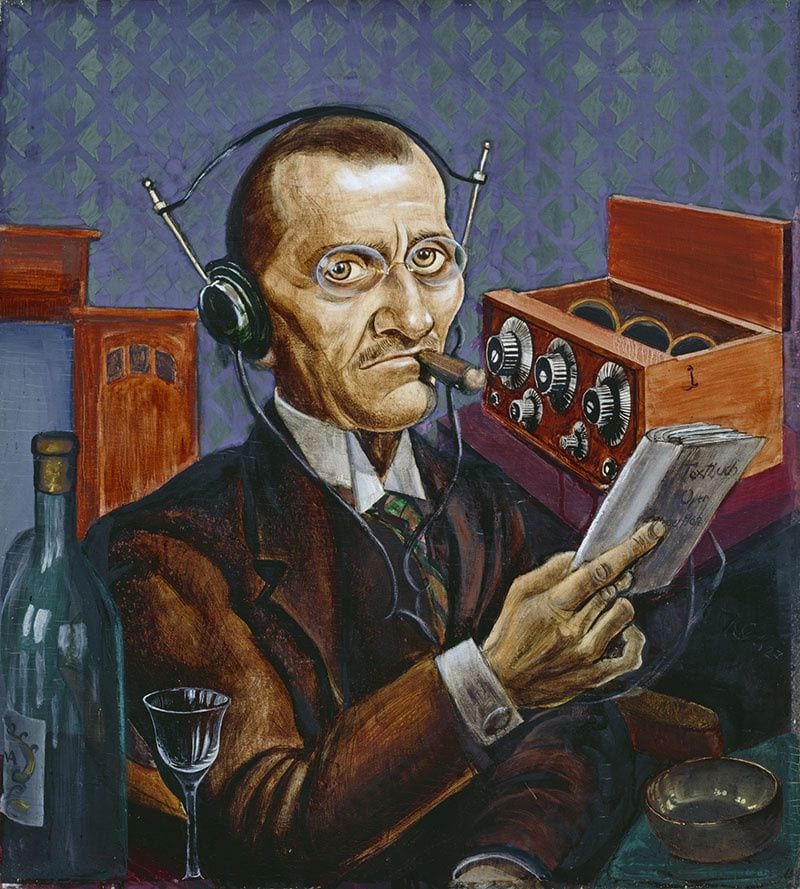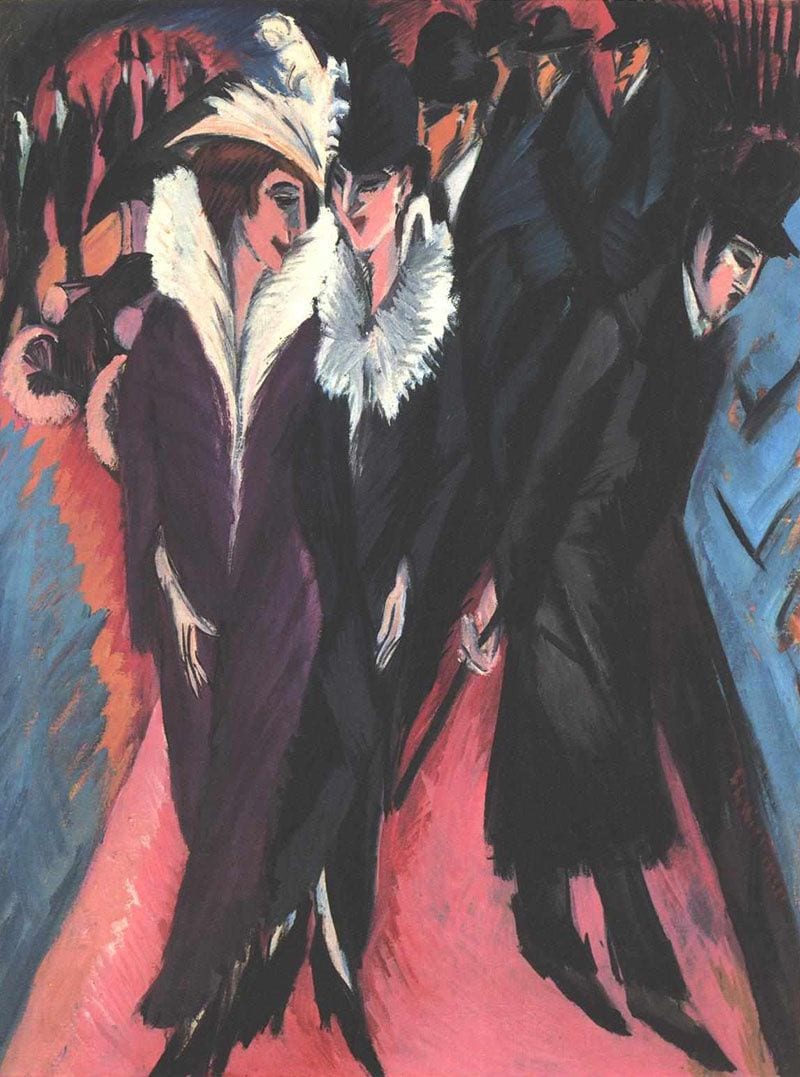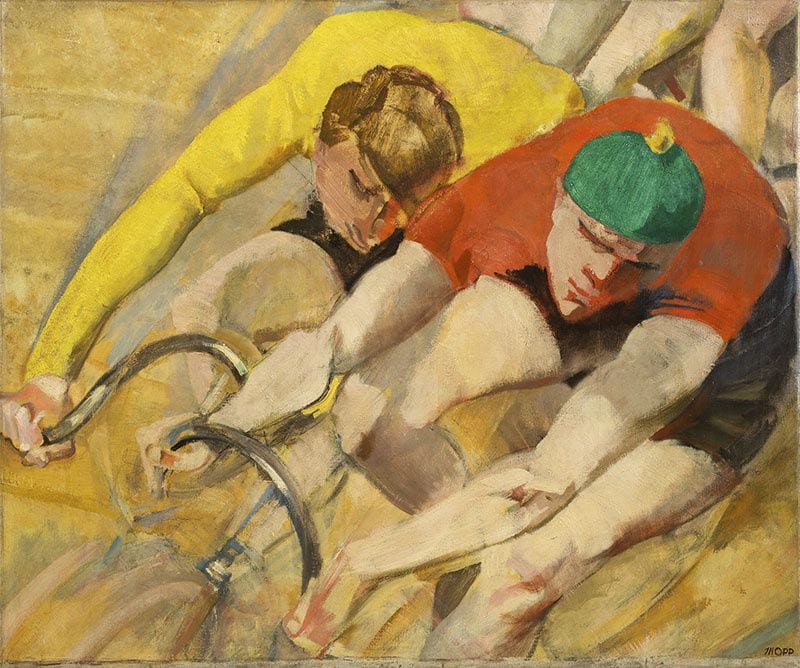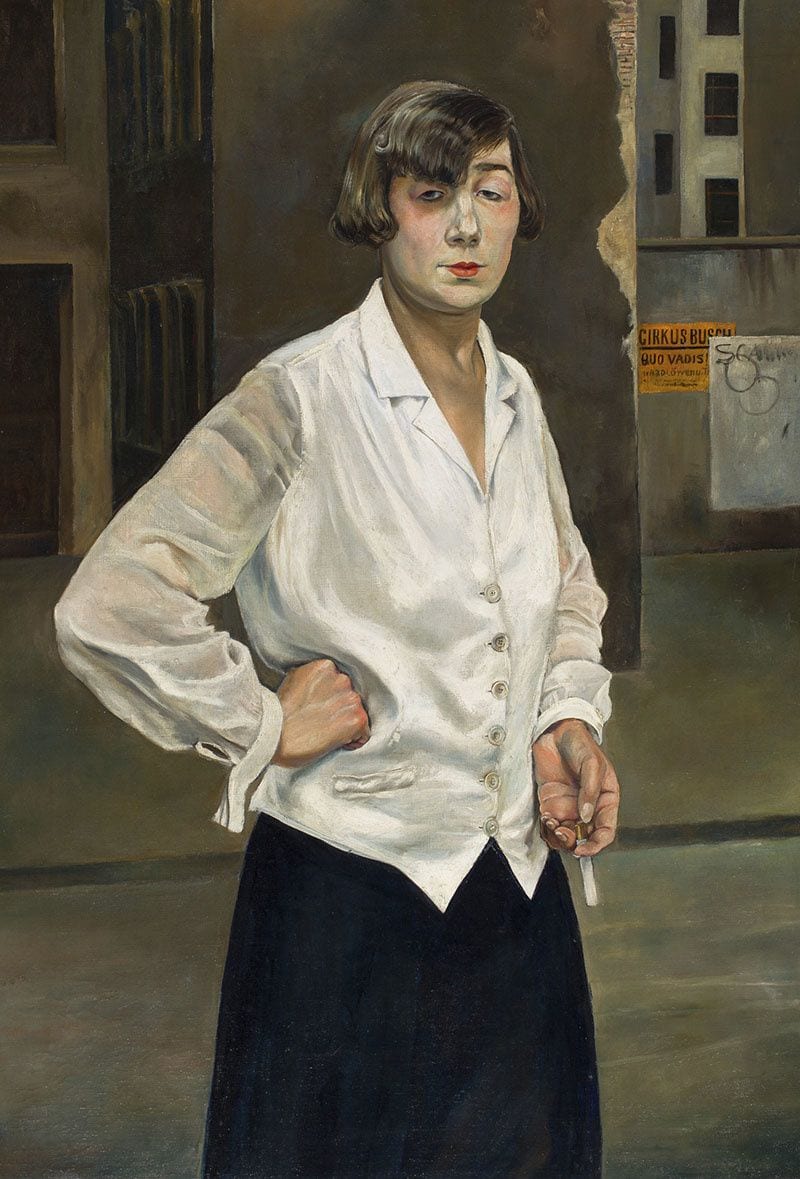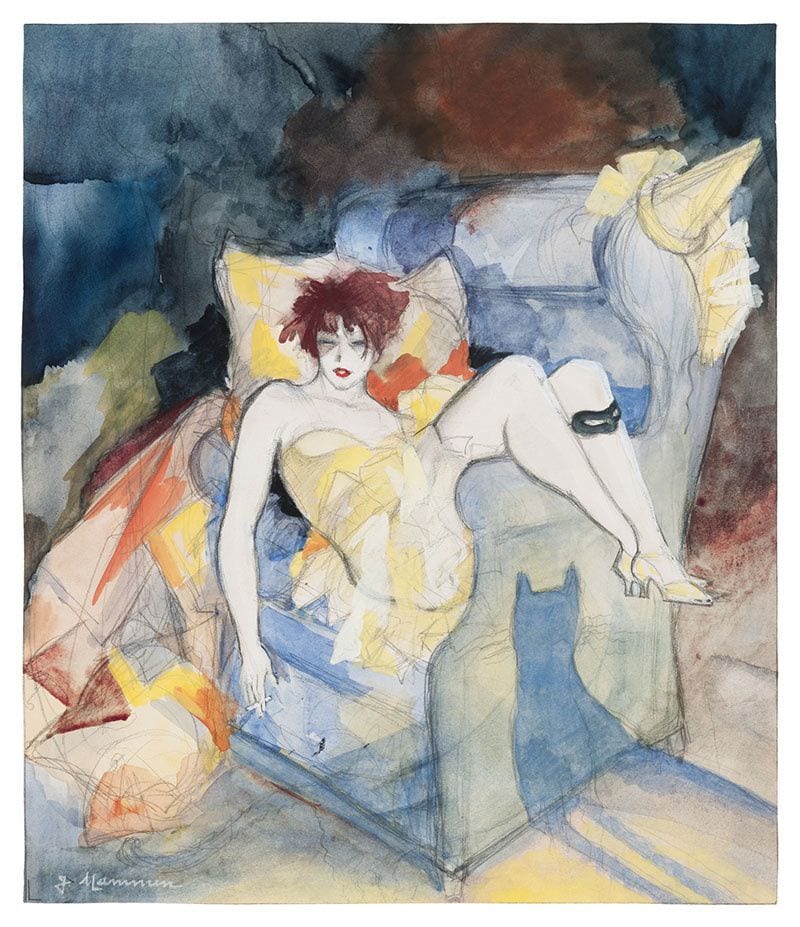
By November 1918 the German citizen found her sense of self crumbling. Mere months earlier, Germany and its allies seemed to be on the cusp of victory. In early March 1918, Russia, in the midst of dealing with the repercussions of its revolution, signed a punitive peace treaty with the Central Powers, thus closing the Eastern Front of the war, allowing the Germans to redeploy their troops. Now Germany could focus on the Western Front, and if fully anticipated decimating the French and British before the forces from the United States could get mobilized. In that same month, the Spring Offensive proved highly successful. But Germany couldn’t follow up on its victories, had trouble supplying its front lines, and suffered increasing domestic unrest on the part of a citizenry fed up with war, hunger, and instability. As the country made moves toward an armistice, the situation at home collapsed.
A group of sailors, refusing to be deployed in another battle when the armies were in the midst of negotiating a cessation of hostilities, mutinied in October 1918 in Kiel, sparking a series of revolts throughout the country. By November, the
Kaiser Wilhelm II and all of the various German kings and dukes abdicated. The monarchy dissipated under the force of a series of loosely organized political actions undertaken by a dizzying array of differing factions. The country was in turmoil. Friedrich Ebert, the head of the Social Democratic Party of Germany (SPD), sought to quell the disturbances and reconcile the increasingly hostile demands of the revolutionary left with the remaining elements of the old, conservative order.
By January of 1919, the Communist Party of Germany (KPD) attempted to foment another revolt but this was violently shut down by the government; more worker’s strikes and rebellions followed. Over the course of 1919, a new constitution was assembled, establishing a federal republic administered by a president and parliament. In the midst of this reformation of the German state, the government, still in its nascency, was forced to sign the Treaty of Versailles, which demanded that “Germany accept the responsibility of Germany and her allies for causing all the loss and damage” during the war. This “Carthaginian peace” required Germany to pay exorbitant reparations and cede substantial territory. Hyperinflation ensued. By November 1923 a single US dollar was worth 4,210,500,000,000 German marks. The currency was stabilized in the following year, and the boom economy elsewhere in the world led to cheap loans to Germany. Within months, the country was transformed from the bleak despair of starvation to the debauched giddiness of perpetual inebriation.
The Weimar Republic (lasting from 1919 to the rise of Hitler in 1933) is one of the most fascinating and confusing political eras in European history. It was blamed by the Nazis and other conservative forces in the early ’20s for the depredations of the Treaty of Versailles (even though the German government was not allowed to negotiate that treaty, it was merely handed a
fait accompli under the threat of further aggression). It was blamed by conservatives in the late ’20s for the decadence of contemporary society, flush with money, booze, and sexual expression. It was blamed by the Nazis and other conservative forces in the early ’30s for the Depression. It has been judged by many historians as being too weak and too full of internal contradictions to withstand the dark charisma of Hitler’s cult of personality.
On the other hand, the Weimar Constitution was, according to historian
William L. Shirer, “on paper, the most liberal and democratic document of its kind the twentieth century had ever seen, mechanically well-nigh perfect, full of ingenious and admirable devices which seemed to guarantee the working of an almost flawless democracy” (The Rise and Fall of the Third Reich: A History of Nazi Germany [NY: Simon and Schuster, 2011], 56). In some ways, its greatest flaw (and one that allowed the Nazis to gain such a strong foothold) was its most idealistic asset: the constitution was designed to prevent a stabilized majority to hold sway, granting more representation to a variety of smaller parties; in essence, this was to be a country that vouchsafed pluralism. The elections in 1930 listed 28 different parties as participants. This splintering of political power allowed for the representation of a variety of interests, but it also made it easier for fringe parties to gain access and credibility.
The Weimar Republic made enormous strides in social equity and cultural advancement. In 1919, women were granted the right to vote (around the same time the US Congress was passing similar legislation). Women’s reproductive rights and the rights of homosexuals were openly and widely debated. The working hours of laborers was limited to 48 hours per week, health insurance was extended to non-workers, and veteran benefits were bolstered. Opportunities for entertainment exploded onto the scene—cabarets, revues (some featuring nude performers), and same-sex nightclubs all became increasingly prominent. Moreover, the arts took on an increasingly social and political role—moving beyond Expressionism’s concern with the inner recesses of the anomic self toward an overt critical function. In the worlds of painting, theater, sculpture, and literature, many artists embraced a variety of techniques and views of art that were beginning to be described as the
Neue Sachlichkeit, “The New Objectivity”.
The label is an umbrella term that encapsulates a wide range of differing concerns, styles, and technical approaches but in nearly anything that might be fairly considered New Objectivity there is a concern with standing up to the social and political world, an attempt to see that world for what it is, to evaluate our roles within it, and to recapture an interest in the plastic and mediate nature of representation. Hardly a singular movement and not entirely an aesthetic, the New Objectivity, like the Weimar Republic that bore it and that informs so much of its sensibility, resists definition. The stunning multiplicity of the New Objectivity can only be encountered through experiencing its variegated contours and modes of representation. The
Schirn Kunsthalle in Frankfurt provided a useful point of entry into the New Objectivity with a 2017 exhibition curated by Ingrid Pfeiffer; the exhibition catalogue now appears in print under the title Splendor and Misery: The Weimar Republic.
The catalogue features nine short essays by several art scholars on subjects ranging from the relationship between art and politics to the fight over abortion to the representation in art of women and homosexuals. These essays are mostly underwhelming in their brevity; most of them broach an intriguing matter only to let it drop without examining it in any depth—one gets the impression that the essays closely resemble the texts that were mounted on the walls of the exhibition, without much expansion. Several of the essays employ random citations of vaunted Weimar intellectuals such as
Theodor Adorno and Siegfried Kracauer without striving all that vigorously to integrate these ideas into the narrative being developed; certain essays merely string together observations without much in the way of scaffolding. The longest and most developed essay, Pfeiffer’s “Splendor and Misery in the Weimar Republic: Pictures of the Uneasiness of an Era” is the exception and demonstrates that, given more space and thought, these writings could have provided real insight into the Weimar Republic. Pfeiffer’s essay addresses the political confusion and fraught social situation of the Weimar period and ties these concerns to concrete observations concerning the artworks she examines.
Of course, as was the case in the larger political situation during the Weimar Republic, the political commitments of artists were hardly uniform. Certain artists openly declared support for specific parties. For example, the Association of Revolutionary Visual Artists of German (Asso, or ARBKD)—including such artists as
Conrad Felixmüller, Otto Griebel, and Alice Lex-Nerlinger—participated directly in political struggle and many joined the Communist Party (KPD). They attempted to provide positive images to counteract the deplorable state of contemporary politics as one can see in Griebel’s The Internationale of 1928. Other artists were skeptical of such partisanship; Georg Grosz wryly dismissed the efforts of the ARBKD as “hurrah Bolshevism” (27). And yet Grosz saw his art as performing a politically critical function: “My task is to show the oppressed the true faces of their masters. Man is not good; he is like cattle” (28).
Courtesy: Schirn Kunsthalle Frankfurt
Courtesy: Schirn Kunsthalle Frankfurt
Kurt Günther, Der Radionist (Kleinbürger am Radio), 1927, Tempera auf Holz, 55 x 49 cm, Staatliche Museen zu Berlin, Nationalgalerie, Foto: bpk / Nationalgalerie, SMB / Klaus Göken, © VG Bild-Kunst, Bonn
Courtesy: Schirn Kunsthalle Frankfurt
If the essays mostly fail to render a clear picture of what was at stake in the arts during the Weimar period, the remainder of the book—the reproductions of numerous paintings, watercolors, drawings, posters, and sculptures—offers a truly breathtaking panorama of the visual thought embodied in the art of the era. As curator, Pfeiffer has done a remarkable job of bringing together a wide range of artworks from an astounding group of artists—some very familiar and some far less so. Of course, stalwarts such as Otto Dix and George Grosz are well represented—indeed, the approach to realism of the latter two artists is addressed in an essay by Olaf Peters—but so are less recognizable artists, particularly women artists. Splendor and Misery includes several fascinating works by two women artists (among others) who made their livings providing illustrations for the many magazines that proliferated during this period: Jeanne Mammen and Dörte Clara Wolff, known as Dodo. Nearly every illustrated page of this book merits close consideration and repays one’s attention with interest. In perusing these pages, one comes away with the sense that the New Objectivity offered a penetrating new way of thinking about the manner in which we view the world and the limits of communication.
The German Expressionism of the beginning of the 20th century was founded on an implicit theory of intersubjectivity. The very notion that one is able to “press out” (following the etymology of the word) something from within oneself so that it becomes available to the social world, available to others with their own inward feelings that they too might long to express, and that this expression will somehow resonate with the inward feelings of others, relies on a fundamental belief that we are porous beings tied together in a web of social relations, open to communication that operates on the assumption that something personal and hidden from view (those inward feelings) can be made public and shared. This view of intersubjective communication holds that not only are we not rationally autonomous (rationality long being held in philosophy as the realm of intersubjectivity insofar as what is strictly logical for me must also be logical for any other rational being) but we are not even emotionally autonomous; in some very real sense, Expressionism seems to proclaim, we feel alike. We might be horrified by some of the feelings that are pressed out in Expressionism, but we are meant to recognize them.
This way of depicting Expressionism gives rise to a rather counterintuitive realization: at the core of Expressionism—despite the emotional exposure of Erich Heckel’s Standing Child: Franzi Standing (1910) or the stark melancholy immersed in a mercantile world of Ernst Ludwig Kirchner’s Street: Berlin (1913)—stands a radical optimism. Our inner feelings may be frightening, even anti-social, and yet those feelings themselves are social property; we are, paradoxically, together in our isolation. The things that I say, from the profound depths of my seeming singularity, resonate with you in yours; we may be lonely but we are never alone.
Alongside Expressionism’s implicit theory of intersubjectivity lay an implicit theory of representation. The works are largely representational; that is, there are recognizable figures populating their canvasses: gentlemen on the prowl, street scenes, primitivist forests. But much German Expressionism treats the canvas almost as though it were a translucent scrim between the world of the viewer and the inner truth of the painting. In short, Expressionism disavows the nature of painting as a medium. To some degree, Expressionism attempts to leap over the issue of representation by courting a kind of impossible immediacy. This ties representation (or its disavowal) to the notion of intersubjectivity. Because its emotion draws on a paradoxically social fund of anomie and despair, Expressionist painting positions itself as the annihilation of the distance between representation and the emotional real; if representation always involves the ontological gap implied by the very notion of a medium (something that intercedes between the sender of the communication and its recipient), then Expressionism seeks to collapse the medium into a kind of spiritual immediacy.
Again, Kirchner’s Street: Berlin provides a telling example. The garish colors that vibrate with a perverse life of their own, the spiky, neurasthenic brushstrokes that articulate the figures but threaten constantly to veer off into some hieratic dimension beyond the visual, the angular juxtaposition of bodies in impossible figurations—these characteristics belie the seeming self-assurance of the people portrayed, piercing the representational surface to gain access to the revelation of a fraught emotional state roiling beneath it. Technique masks itself as proclamation. Expressionism is certain of what it wishes to communicate and is confident we will receive it in kind—even if it upsets or angers us. The closed circuit of communication that Expressionism espouses reveals a genuine faith in the preservation of meaning that stands in utter contrast to the often shocking or depressing imagery in which it revels.
The New Objectivity was an explicit rejection of this notion of intersubjectivity. Otto Dix declared: “The Expressionists made enough art. We wanted to see the things at close quarters, clearly, almost without art” (24; emphasis mine). At first blush, this statement appears to declare on the side of immediacy, to see almost without art; the quotation might appear to hold that the New Objectivity dispatches the mediational aspects of art to provide direct access to that which it depicts. But notice that Dix is concerned here with seeing the things. Expressionism, by and large, is the pursuit of the voice of the subject, the emotional message in a bottle from one isolated sufferer to another; this is an art that attempts to plumb the depths of the soul, to communicate across the abyss of alienation. The New Objectivity confronts the surface of things, recognizing them as impenetrable. Facing up to the things in the impenetrability of their surfaces, it seems to me, is what Dix implies with his notion of representation almost without art. Art, as set forth by Expressionism, grants itself ambitions that the New Objectivity rejects—namely the purchase upon intersubjectivity, the faith that meaning can be conveyed from one person to another.
The New Objectivity stands aloof from such an overt commitment to meaning. I’m not suggesting that these paintings are without intention, but thE intentions recognize the futility of their task. As Dix further insists: “I only want to see what is there, the exterior. The interior falls into place of its own accord; it is reflected in what is visible.” (33) Interiority is a secondary consideration in the New Objectivity, a fallout perhaps from a concern with the surface. Indeed, if we think of interiority as connoting the depths of meaning, then the nature of that “reflection” of the interior in what is visible becomes a rather vexed matter. This is the source of the New Objectivity’s particular brand of irony, which is so characteristic of its removed stance vis-à-vis the object world.
Courtesy: Schirn Kunsthalle Frankfurt
Courtesy: Schirn Kunsthalle Frankfurt
Courtesy: Schirn Kunsthalle Frankfurt
Courtesy: Schirn Kunsthalle Frankfurt
For example, in discussing Dix’s lithograph War Cripples (1920; the painting of the same name was destroyed as degenerate by the Nazis), Pfeiffer writes: “Dix’s method of formal decomposition and exaggeration provokes a mixture of repulsion and horror, but also involuntary merriment, because through the extreme exaggeration and abstraction of the composition he denies a direct empathy with the event. He creates an ironic distance and mixes Realism with the grotesque” (25). As horrific as its subject matter was in the immediate aftermath of the war, the remove from which Dix asks us to view these victims creates a sense of mirth, despite our resistance toward being amused at the expense of those suffering. The lithograph attains a strange equipoise of ambiguity; it seems not to be poking fun at the debilitated but it also doesn’t pretend (in the manner of Expressionism) to be able to convey through empathy the pain of the other. The almost clinical distance created between the viewer and the subject matter offers up a kind of visual philosophy on the impenetrability of representation. These grotesque figures, with their mechanical devices replacing the appendages they lost in battle, are all surface—at least for us; we are granted no access to their inner lives aside from what is obliquely reflected in those surfaces.
So, not only are the paintings of the New Objectivity largely representational in a relatively straightforward sense, they also bring to the forefront the very issue of representation by creating painted surfaces that are at once immediately comprehensible and yet impenetrable, impervious to an immediate identification with the subjects depicted, and provocatively obscure as to what we are supposed to read in these representations. The New Objectivity recognizes and emphasizes the ontological gap of the mediational nature of representation. We recognize these canvases as depictions of the external world and yet we seem to be hopelessly cut off from any meaningful confluence with that world. I think the term “confluence” is particularly appropriate here. The New Objectivity suggests that we cannot flow into our environment, we are ontologically cut off from congress with the world we occupy. Emotions are often described as flowing (pliable states of being that shift fluidly in response to our situation). But whereas Expressionism is the art of emotion in all of its streaming immediacy, the New Objectivity continually runs up against the stolid impassivity of the things and objects that populate the world, that refuse to respond to our blandishments, that hinder us (in German, one word for object is Gegenstand, that which “stands against” us) in our attempts to press out our inner feelings in a way that will resonate with the world in which we are immersed.
In short, the New Objectivity betrays a deep-seated pessimism—not just with respect to the political disappointment (and sometimes disaffection) it often portrays but, more importantly and profoundly, with respect to the possibility of communication as a means for the interiority of an individual to be pressed out into the social world and received and understood by the interiority of another. The New Objectivity postulates a world in which communication is necessarily founded upon misprision. Someone speaks. I hear them speak. But I do not and cannot hear what they say in the manner in which they intended. I only hear my notion of what was said, inflected (perhaps entirely altered) by my own understanding of the world and the other, my own emotional landscape, my own conceptual apparatus. Communication here consists of a set of signals flashed back and forth across a great divide where neither party has the code to decipher the gestures of the other, and therefore is forced to read them as though they were their own signals, their own language, their own means of understanding.
For all of the disturbing messages Expressionism conveys, it generally avoids the enigmatic (certain canvases by Oskar Kokoschka notwithstanding); the New Objectivity traffics in the cryptic, the incommunicable, that which can’t be properly formulated. One of my favorite works included in this collection, one I hadn’t known prior to reading this book, is Jeanne Mammen‘s watercolor Ash Wednesday (ca. 1926). At first, it appears to be a straightforward depiction of a fashionable young woman waking from a slumber on an upholstered chair, doubtless suffering a hangover from the previous night’s Mardi Gras carousing. Her legs are propped up over the arm of the chair; her sheer yellow party dress is askew; her high-heeled shoes remain on her feet. Her dangling arm incautiously holds a lit cigarette. The remnants of a Pierrot costume surround her: the coned hat atop the back of the chair, the parti-colored coat spread out behind her (perhaps that is a comforter), the black mask provocatively attached to her left leg. Her stylishly short and tousled reddish hair frames her eyes, squinting in the garish light she seems not to have expected, and the bold red splash of her lips.
She stares (or rather squints) at the viewer. Is she surprised by our presence or is this a look of anticipation? Is she embarrassed or brazen, hung over or still inebriated, worn out or newly invigorated? She exudes a considerable sense of self-possession. She assumes dominion over this enclosed space and yet is far from domineering; hers is a relaxed assurance and yet her positioning betrays a certain vulnerability. Is she our conquest or are we hers? The painting demands our continual engagement. At first it appears trivial and yet it sustains our interest and insists upon our attention. And the more I stare at her staring back at me, the less I believe I can read what she seems to be trying to convey. That room that she seemed so assuredly to dominate slowly begins to swallow her whole. The light coming from the direction of her feet recedes into the disorienting darkness at her back. Perhaps most strange of all is the shadow of the cat cast against the armchair. Initially striking one as a charming detail, there is something peculiarly off-putting about that feline presence. In one sense, it echoes on a smaller scale the confrontation of light and shadow that informs the room as a whole. In another, it wavers between the status of an ominous portent of a malignant future and the reassuring creaturely comfort of a familiar pet. At once forbidding and consolatory, the cat subverts mere legibility.
And yet, for all of the semantic richness of symbolic potentiality here (the Pierrot costume is a prominent and potent device in paintings of the late 19th and early 20th centuries, the cat is a richly multivalent vehicle of possible meanings), the painting seems to derail attempts to decode it. For all her allure, I find it rather difficult to relate to the woman in this painting. She resists my attempts to know her, to resonate with her experiences. My alienation from her arises from the insistence upon the recalcitrance of representation in the New Objectivity. The New Objectivity deflates the allegorical and the symbolic, returning symbols to the status of mere things, shorn of their poetic accretions. But the dissevering of the object from its potentiality for symbolic import doesn’t bring the object “down to earth” and make it more accessible, more knowable. Perhaps shockingly, blocking the object from a poetic flight of fancy doesn’t bring that object closer to our grasp but rather forces it to withdraw further from our reach. The object recedes into its own untouchable interiority, forever evading our attempts to grasp it. The New Objectivity doesn’t attempt to express alienation, it induces it, drawing the fact of our ontological separation from the world into the technique of its manner of representation.
The symbol, New Objectivity suggests, is merely the lie we tell ourselves in our self-assurance that we operate in a world that can be seen, that can be understood, and over which we have at least a modicum of control. The symbol is predicated upon the notion of fluid connection. A symbol doesn’t always mean the same thing in every context; it is malleable, adaptable. It demonstrates the fluidity of connection among things in the world. Even though the symbol might at first seem like a flight from our grasp on reality toward some esoteric realm of pure meaning, it is really a mechanism we employ to make the world itself appear legible, open to our desire to read and interpret its meanings.
The New Objectivity undermines the symbol, deflates its pretentions, returns it to the status of mere thing—an object that is not revelatory of deeper meaning but rather a hindrance to our access to the world, an obstacle in the path of our understanding. The object here lacks fluidity; it stubbornly remains ever the same and dissociates itself from meaning altogether. The New Objectivity denies the legibility of the world, negates the possibility of pure communication. With the New Objectivity we come face to face with the inscrutability of all that surrounds us — and we blanch.



